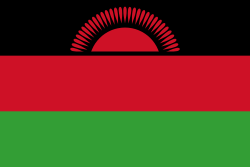| This article is part of a series on the |
| History of the Tumbuka people |
|---|
 |
The Manda is a sub ethnic group that is part of the larger Tumbuka group [1] based in Ludewa District in the Iringa Region and northern Ruvuma Region of southern Tanzania, along the eastern shore of Lake Malawi. The group broke away from the main group a centuries ago from the group of Mulonga Mbulalubilo. [1]
In 2002 the Manda population was estimated to number 22,000. Some of these lived in Gua land and Mkwajuni, Chunya district in Mbeya region. They also found in areas where fishing activities take place like Mtera Reservoir, nyumba ya mungu, mlimba etc. Manda people originated from Ngoni [2]